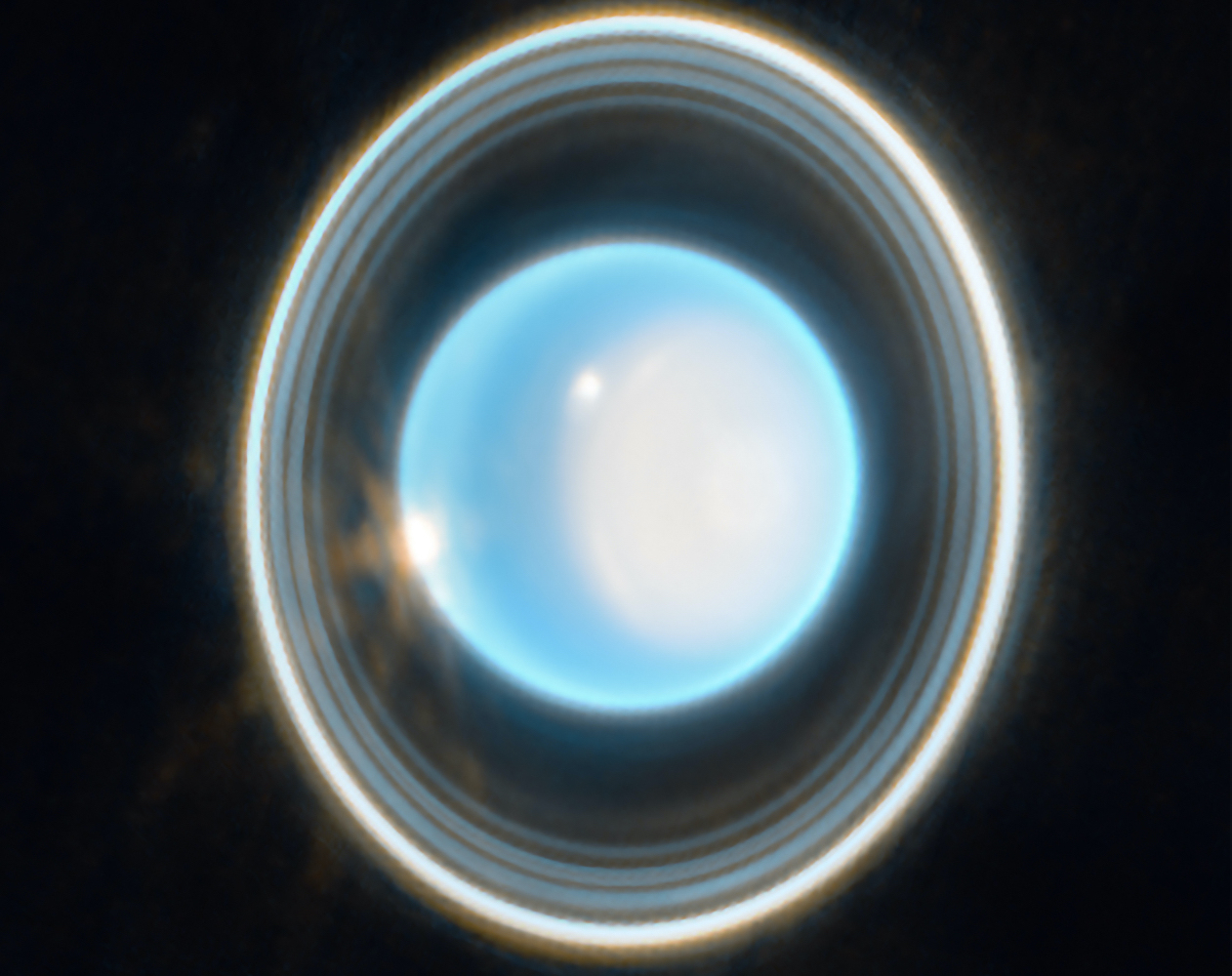
NASA’s James Webb Space Telescope has taken a magnificent picture of Uranus, the seventh planet from the sun. Uranus is a unique planet since it rotates on its side, which causes extreme seasons that last many years. The image shows Uranus’ dramatic rings and bright features in its atmosphere.
The James Webb Space Telescope has an extraordinary sensitivity that allows it to capture even the faintest dusty rings around Uranus. Previously, only two other facilities, Voyager 2 spacecraft in 1986 and Keck Observatory with advanced adaptive optics, have imaged these rings.
The image, taken by the Near-Infrared Camera of the James Webb Space Telescope, uses data from two filters at 1.4 and 3.0 microns, shown in blue and orange, respectively. The combination of these filters creates a representative-color image, and Uranus appears with a blue hue, as explained in NASA’s press release.
Currently, it is late spring for Uranus’ northern pole, which is visible in the image. However, when Voyager 2 visited Uranus, it was summer at the south pole. Uranus takes 84 years to orbit the sun, and its northern summer will be in 2028. The south pole is now facing the darkness of space and is out of view.
Brightening at the polar cap
Voyager 2’s camera showed a featureless blue-green ball in visible light when it looked at Uranus. However, the James Webb Space Telescope, with its infrared wavelengths and greater sensitivity, has allowed scientists to see more detail.
One of the discoveries was a brightening at the pole facing the Sun, known as a polar cap. This polar cap is unique to Uranus, and it seems to appear during the summer months when the pole is directly exposed to sunlight and then vanishes in the fall.
The recent data gathered by the Webb telescope will help scientists better understand this mysterious mechanism.
Uranus – Hubble vs Webb: pic.twitter.com/DZzdnzInoD
— Jasmine 🌌🔭 (@astro_jaz) April 6, 2023
The telescope revealed a subtly enhanced brightening at the center of the polar cap, which was not seen as clearly with other powerful telescopes such as the Hubble Space Telescope and Keck Observatory.
A bright cloud sits at the edge of Uranus’ polar cap, along with some dimmer features just beyond the edge, while a very bright cloud is visible on the planet’s left side. These kinds of clouds are common for Uranus in infrared light and are probably related to storm activity, according to NASA’s press release.
Uranus as an ‘Ice Giant’
Uranus is known as an ice giant because its insides are mostly made up of a hot, dense fluid of “icy” materials like water, methane, and ammonia, sitting above a small rocky core.
James Webb Space Telescope took a picture of Uranus that shows 13 known rings, with 11 visible in the image. Some of these rings look like they merge together to form larger rings when they’re close. Nine are the main rings of Uranus, and two are fainter dusty rings, like the zeta ring that’s closest to the planet.
Scientists think that future James Webb Space Telescope images of Uranus will reveal two faint outer rings that were discovered using the Hubble telescope during the 2007 ring-plane crossing, according to NASA.
See all the latest news from Greece and the world at Greekreporter.com. Contact our newsroom to report an update or send your story, photos and videos. Follow GR on Google News and subscribe here to our daily email!



